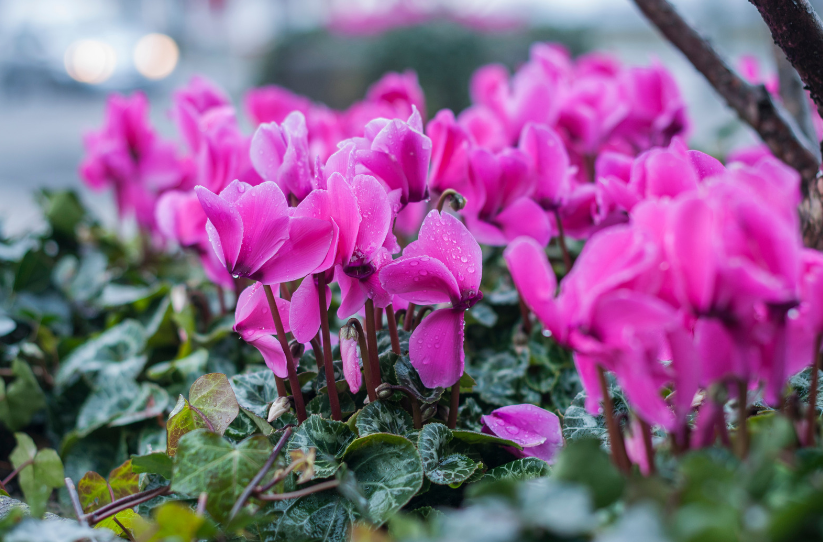Basic Cyclamen Plant Care

The correct temperature is the first step in cyclamen care. Cyclamens thrive in cool, damp settings in the wild.
Your cyclamen will slowly wilt if the temperature inside your home exceeds 68 degrees Fahrenheit (20 degrees Celsius) during the day and 50 degrees Fahrenheit (10 degrees Celsius) at night.
When temperatures are too hot, the plant starts to yellow, and the blooms start to fade quickly.
Tropical cyclamen, offered as houseplants, cannot withstand temperatures below 40 degrees Fahrenheit (4 C.).
On the other hand, hardy cyclamen are generally hardy to USDA Zone 5. Still, you should verify the plant’s label to see the exact hardiness of the hardy cyclamen variety you are buying.
Hardy cyclamen are available in garden nurseries for outdoor use.
Ensuring that cyclamen is adequately watered is the next crucial step in caring for it.
Cyclamen are vulnerable to both excessive and insufficient irrigation. You should choose a potting material that holds water effectively and ensure the plant has excellent drainage.
Only water your cyclamen plant when the soil feels dry to the touch. Do not let the plant remain in this dry state for too long, as this could result in droopy leaves and blossoms, which are obvious signals that the plant hasn’t received water.
Water the plant from beneath the leaves so that the water does not come in contact with the stems or leaves.
The stems and leaves may decay if there is water on them. Soak the soil thoroughly, then let any extra water drain.
Fertilizer is the next step in taking care of cyclamen plants. Water soluble fertilizer should only be used once every one to two months, blended at half strength.
Getting too much fertilizer can prevent cyclamen from blooming again.
Cyclamen Care After Blooming And Reblooming
Cyclamen plants will continue to bloom for a few weeks if they are kept in a north-facing window in a cool room (55 to 60 degrees Fahrenheit) and watered enough to keep the soil evenly moist and never soggy.
Avoid splashing the plant’s crown or the foliage as this can promote disease. Remove fading flowers and their stems as needed.
Most gardeners find it too difficult to force the plant to bloom the following season again.
Those willing to take the challenge should follow these suggestions:
- As foliage and flowers begin to fade, withhold water.
- Remove all dead foliage from the tuber, clean off the soil, and store the tuber in peat moss or vermiculite in a dark, cool (50 degrees) spot for its dormant period.
- Later in spring or early summer, check the tuber for new growth.
- As soon as growth begins, repot the tuber with its top half exposed and bottom half buried in fresh, soilless mix.
- Resume regular watering and fertilize with a diluted 10-10-10 or 15-15-15 mix twice a month.
Cyclamen benefits from summers spent outside in a protected spot in the garden where it receives morning sun. Bring the plant indoors before there is a frost in fall.
Compost Facts
If your compost container is covered, you can keep adding kitchen waste throughout the winter. Pets like dogs will be kept out by the lid. Freestanding plastic composters come in a variety of models.
The result of the composting process, which involves gathering, mixing, and allowing organic matter to decay, is compost. It replicates how deciduous leaves naturally form a mulch layer that eventually decomposes.
In natural ecosystems, native plants do not require additional fertilizer beyond what nature gives because of the natural recycling mechanism that replenishes soil nutrients and strengthens soil structure.
Composting enhances the soil in your garden and lessens the quantity of garden waste that is dumped in landfills.
The resulting compost can be implemented to garden beds and around trees as mulch or to improve the soil.


























